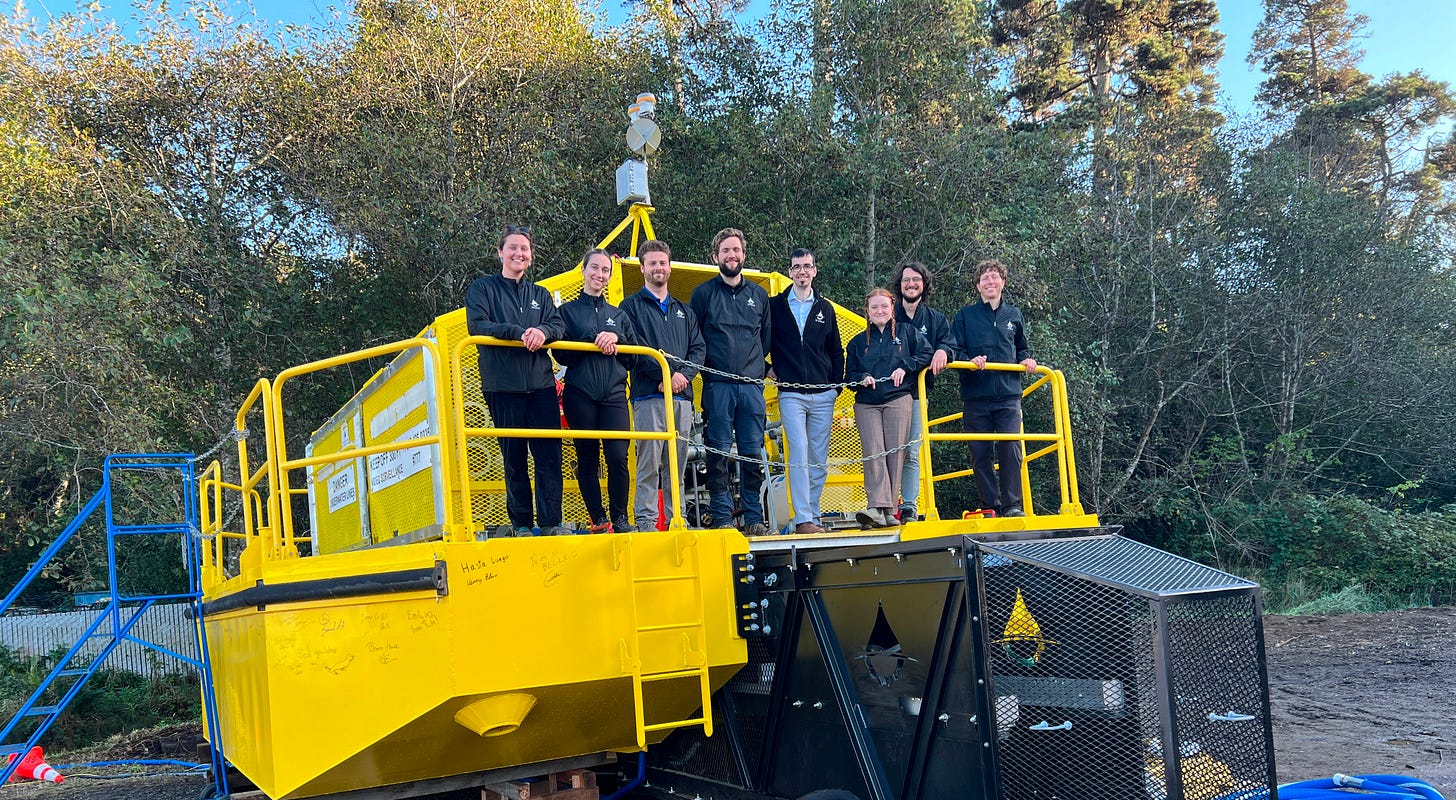Highly Anticipated Wave-Powered Desalination Buoy Arrives in Fort Bragg
Pilot to begin in mid-2026
Oneka Technologies, a Canadian startup focused on addressing water scarcity, unveiled its desalination buoy on Friday in Fort Bragg. The arrival of the floating system marks the final phase of preparation before the launch of a yearlong pilot project aimed at determining whether wave-powered desalination is economically and environmentally viable.
The project represents the first time Oneka’s technology will operate in California. The system harnesses the natural motion of the ocean—using waves as both its energy source and its raw material—to turn seawater into fresh water.
Fort Bragg began seeking alternative water supplies after a severe drought in 2021. The city later secured state funding for a pilot program through the California Department of Water Resources.
Dragan Tutic, Oneka’s CEO and founder, said the buoy is nearly ready for installation. The company has previously deployed units in Chile and tested prototypes in eastern Canada. Three units are currently installed and operating in Florida.
Deployment and Production
If permitting and weather conditions align, the buoy could be deployed by mid-2026. The permitting effort has taken roughly two years and remains underway, with approvals pending from the California Coastal Commission, U.S. Army Corps of Engineers and U.S. Coast Guard.
Once in operation, a single buoy is expected to generate about 13,000 gallons of fresh water per day, though output will vary with wave conditions. The system needs waves only about one meter high to function. Its modular design allows multiple buoys to be anchored together to increase production capacity.
How the Technology Works
The system operates without electricity and relies entirely on mechanical power. It uses reverse osmosis, a membrane-based desalination process.
Tutic described the mechanism: A buoy on the surface is tethered by a rope to a heavy anchor. As waves move the buoy up and down in an elliptical pattern, the motion drives a pumping action similar to a bicycle pump. Seawater is drawn in and pressurized through reverse-osmosis membranes, separating out fresh water—known as permeate. That water is then delivered to shore through an underwater pipe.
Environmental Considerations
The buoy will be positioned about a half-mile offshore, in a sandy-bottom area selected to minimize impacts to marine life.
Desalination creates brine, a saltier byproduct of the process. Oneka’s system dilutes this brine by mixing it with the seawater that is drawn in but not pushed through the membranes, resulting in a discharge only about 25% saltier than the surrounding ocean—far less concentrated than that produced by conventional desalination plants.
The brine is released just beneath the buoy. Modeling by a Spanish firm indicates that required dilution levels are met within 10 feet of the discharge point. Throughout the 12-month pilot period, sensors will track brine output and ocean salinity to ensure environmental compliance.
Interest in the technology has grown sharply. In the past 18 months, Oneka has received roughly 250 inquiries from resorts, industrial operators, municipalities and agricultural users worldwide, Tutic said. Eight communities in California have also contacted the company as they grapple with shrinking water supplies and seek to diversify their water portfolios.



